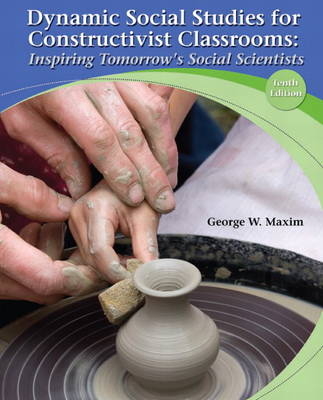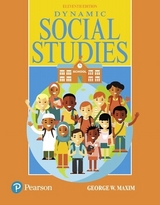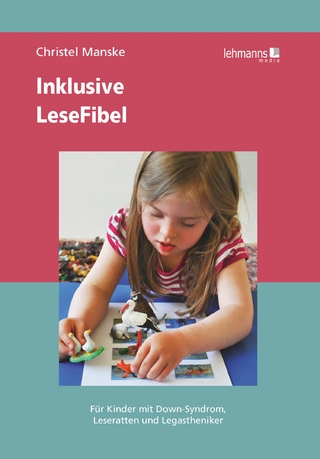
Dynamic Social Studies for Constructivist Classrooms
Pearson (Verlag)
978-0-13-284948-7 (ISBN)
- Titel erscheint in neuer Auflage
- Artikel merken
Now easier than ever to navigate, the text includes a new design and presentation throughout.
In keeping with current interest in learning about the economy, a new, comprehensive treatment of economics is included in Chapter 11.
Providing a complete look at the six social sciences is possible through the book’s added content on anthropology and sociology in Chapter 10.
How to include social studies in a crowded instructional program is covered in a new Chapter 6 on interdisciplinary curriculum.
Determining what to teach in the social studies curriculum is aided in the marginal notes that match illustrative activities to professional standards throughout the text.
Teachers get invaluable help for dealing with individual and group characteristics and differences in the book’s increased emphasis and new material on such contemporary concerns as bullying and gender specific behavior.
Valuable suggestions for short- and long-term planning is provided in Chapter 3’s look at the Wiggins/McTighe Understanding by Design (UbD) approach.
Teachers are able to integrate the use of the latest technology and social media into the classroom—whiteboards, webquests, mobile devices, and more—through the increased emphasis presented throughout the text.
Ways to improve group and individual learning experiences are presented in the new section on learning centers in Chapter 6.
Also included are expected learning outcomes at the beginning of each chapter and “Teaching Tips” boxes highlighting successful teaching strategies throughout.
George Maxim began his professional career in rural Appalachia and ultimately taught in varied settings and at different levels from preschool through the elementary school grades. After completing a very enjoyable early childhood and elementary school teaching career, he pursued a PhD in Elementary Education from Penn State University, specializing in early childhood and social studies education. He accepted a position at West Chester University, teaching graduate and undergraduate courses in early childhood education, creativity, social studies methods, and literacy. In addition, Dr. Maxim has spoken to various groups, conducted in-service programs, and delivered workshops to teachers throughout the region. He has been invited to speak to audiences in locations as distant as Seoul, South Korea. Dr. Maxim has received a number of teaching awards, including the Certificate of Excellence in College Teaching from the Pennsylvania Department of Education. Dr. Maxim’s articles have appeared in various journals, including Childhood Education, Social Education, Social Studies and the Young Learner, Science and Children, The Arithmetic Teacher, and other relevant professional journals. He has written several books, including The Very Young, The Sourcebook, Learning Centers for Young Children, and Dynamic Social Studies for Constructivist Classrooms.
Part I Foundations of Instruction
Chapter 1 Dynamic Social Studies: The Subject You Will Teach
Chapter 2 Individuality and Diversity: The Children You Will Teach
Chapter 3 Standards-Based Instruction: Planning Lessons and Units
Part II Approaches to Classroom Instruction
Chapter 4 Social Constructivism: Scaffolded Learning
Chapter 5 Cognitive Constructivism: Discovery Learning (Inquiry and Problem Solving)
Chapter 6 Curriculum Integration: Linking Subject Matter and Learning Experiences
Part III Social Science Content and Processes
Chapter 7 Young Historians: Learning to Unlock the Past
Chapter 8 Geography: Exploring the People/Place Connection
Chapter 9 Civics: Young Citizens in Action
CHAPTER 10 Anthropology and Sociology: Cultures and Society
CHAPTER 11 Economics: Scarcity and Choices
| Erscheint lt. Verlag | 5.7.2013 |
|---|---|
| Sprache | englisch |
| Maße | 190 x 230 mm |
| Gewicht | 690 g |
| Themenwelt | Schulbuch / Wörterbuch |
| Sozialwissenschaften ► Pädagogik ► Schulpädagogik / Grundschule | |
| ISBN-10 | 0-13-284948-8 / 0132849488 |
| ISBN-13 | 978-0-13-284948-7 / 9780132849487 |
| Zustand | Neuware |
| Haben Sie eine Frage zum Produkt? |
aus dem Bereich



